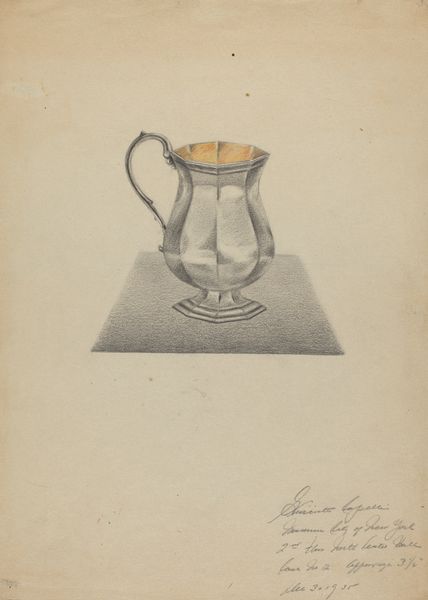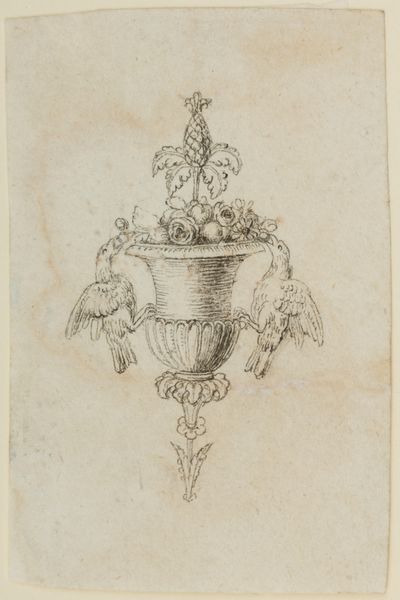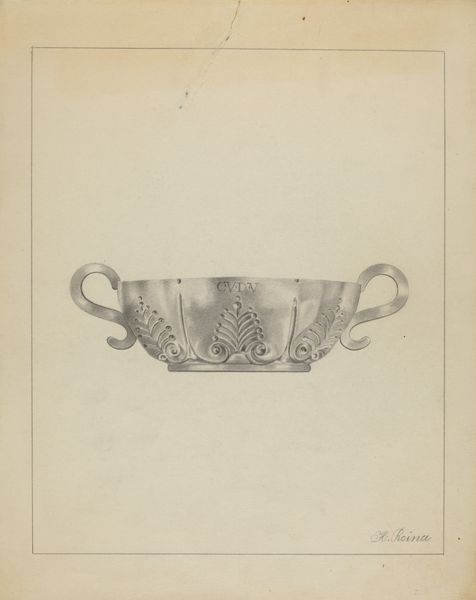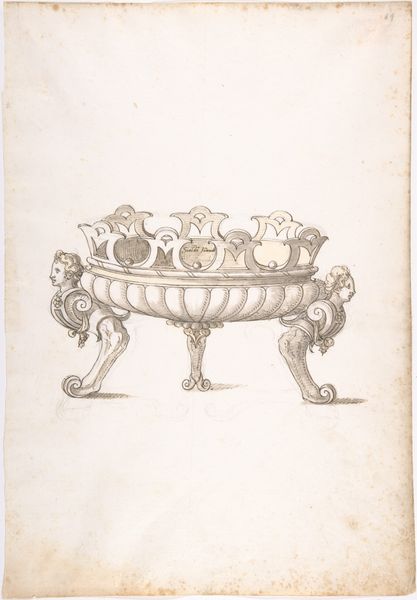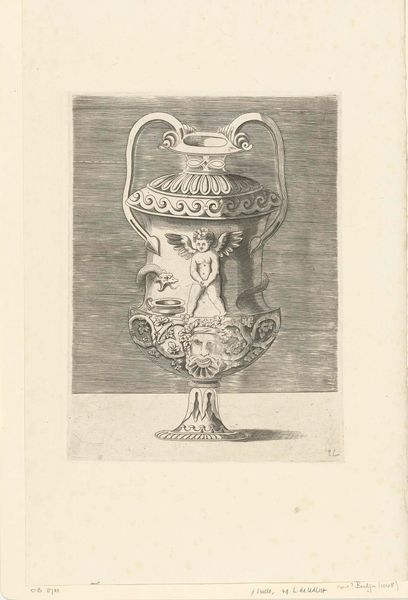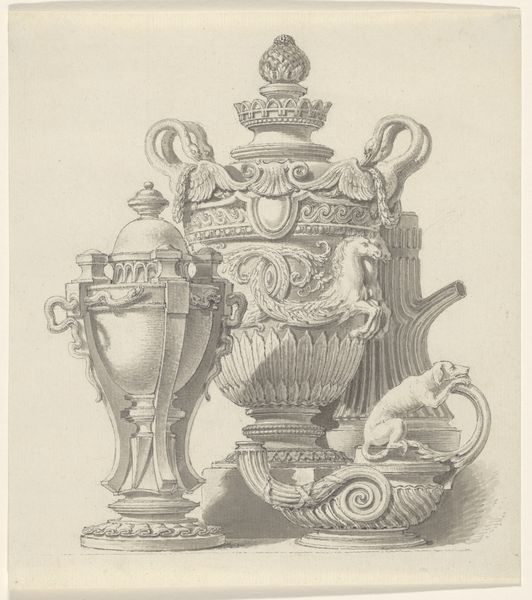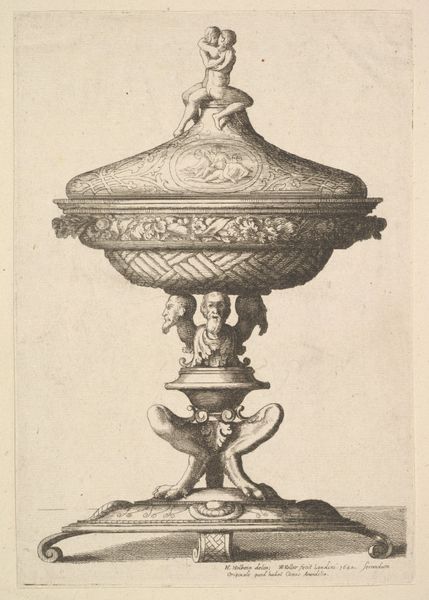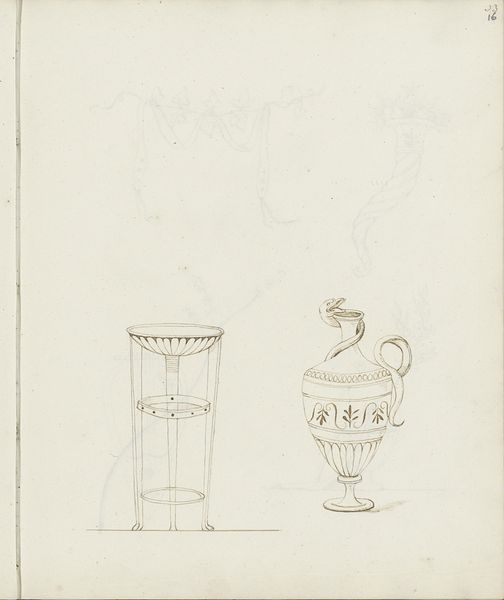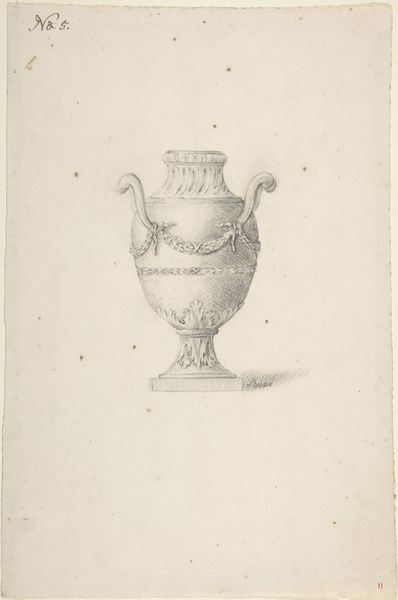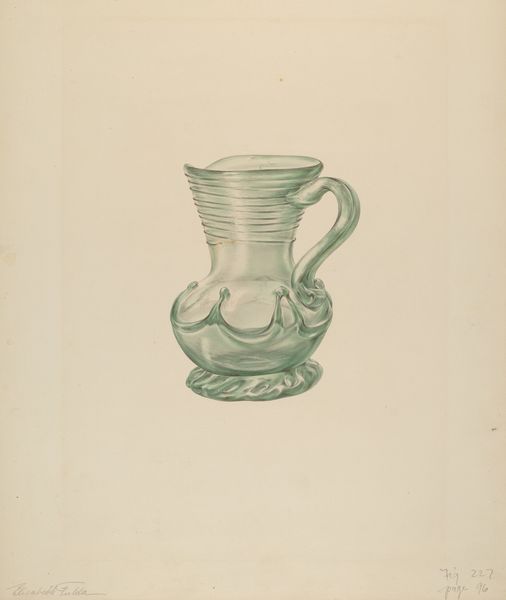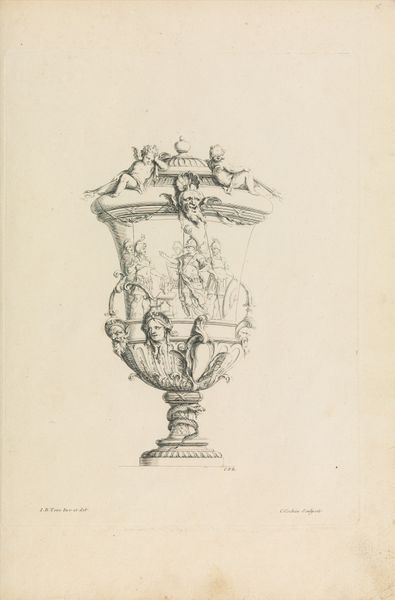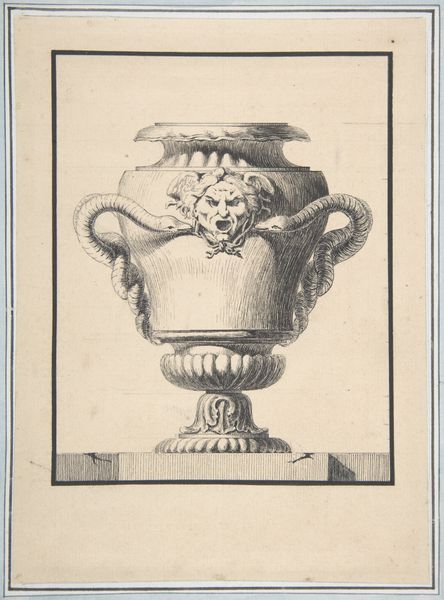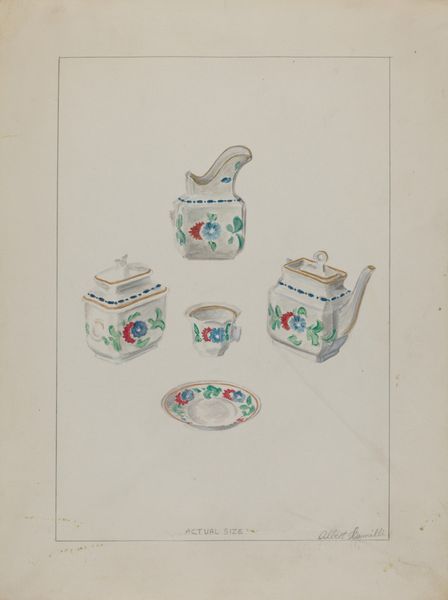
print, engraving
#
neoclacissism
# print
#
engraving
Dimensions: 195 mm (height) x 140 mm (width) (Plademål)
Curator: We're looking at "Opstilling af sølvgenstande" – Still Life with Silver Objects – an engraving by Gerhard Ludvig Lahde, created sometime between 1765 and 1833. It's part of the collection at the SMK, Statens Museum for Kunst. Editor: It has such a delicate, almost fragile quality. The etching gives these precious objects an ephemeral feel, quite different from the impression the heavy, luxurious materials themselves would normally convey. Curator: Lahde lived in a period defined by political reform and the rise of Enlightenment thinking; art started reflecting bourgeois tastes and consumerism while critiquing it. Silver objects would represent affluence and class distinction, so their depiction invites complex readings about social structure and value systems. Editor: Precisely! Engraving makes even more sense when seen in context of mass production and reproduction. Lahde meticulously renders each surface and reflection through repetitive mark-making, making it evident that hand labor and skilled labor go hand in hand here. These refined items required investment at all stages, not just purchase. Curator: Considering it belongs to the Neoclassical movement, how would this emphasis on craft tie to it? The focus on precise lines, symmetry and a somewhat idealized representation of reality seems almost contradictory. Editor: Perhaps the focus here rests not just in reflecting some idealised sense of "truth" or beauty typical for the artistic current it aligns itself with. Material honesty and the display of laborious creation, even in reproductive prints, are equally important factors too. Curator: It definitely provides food for thought! The arrangement seems very deliberate; the way different objects are positioned in relationship to each other reveals stories of commerce, colonialism, and power dynamics in a consumer society that also relied upon exploiting its labor force, making this deceptively simple piece surprisingly layered! Editor: Agreed! The composition also highlights silver as a status symbol whilst paradoxically democratizing access to its image, revealing some of capitalism’s inherent contradictions concerning materiality, labor, consumption, and art production processes at once. Curator: Reflecting on it this way opens up so many interesting perspectives and new critical considerations! Editor: Indeed. Examining art through its production brings valuable insights into cultural dynamics throughout history.
Comments
No comments
Be the first to comment and join the conversation on the ultimate creative platform.
